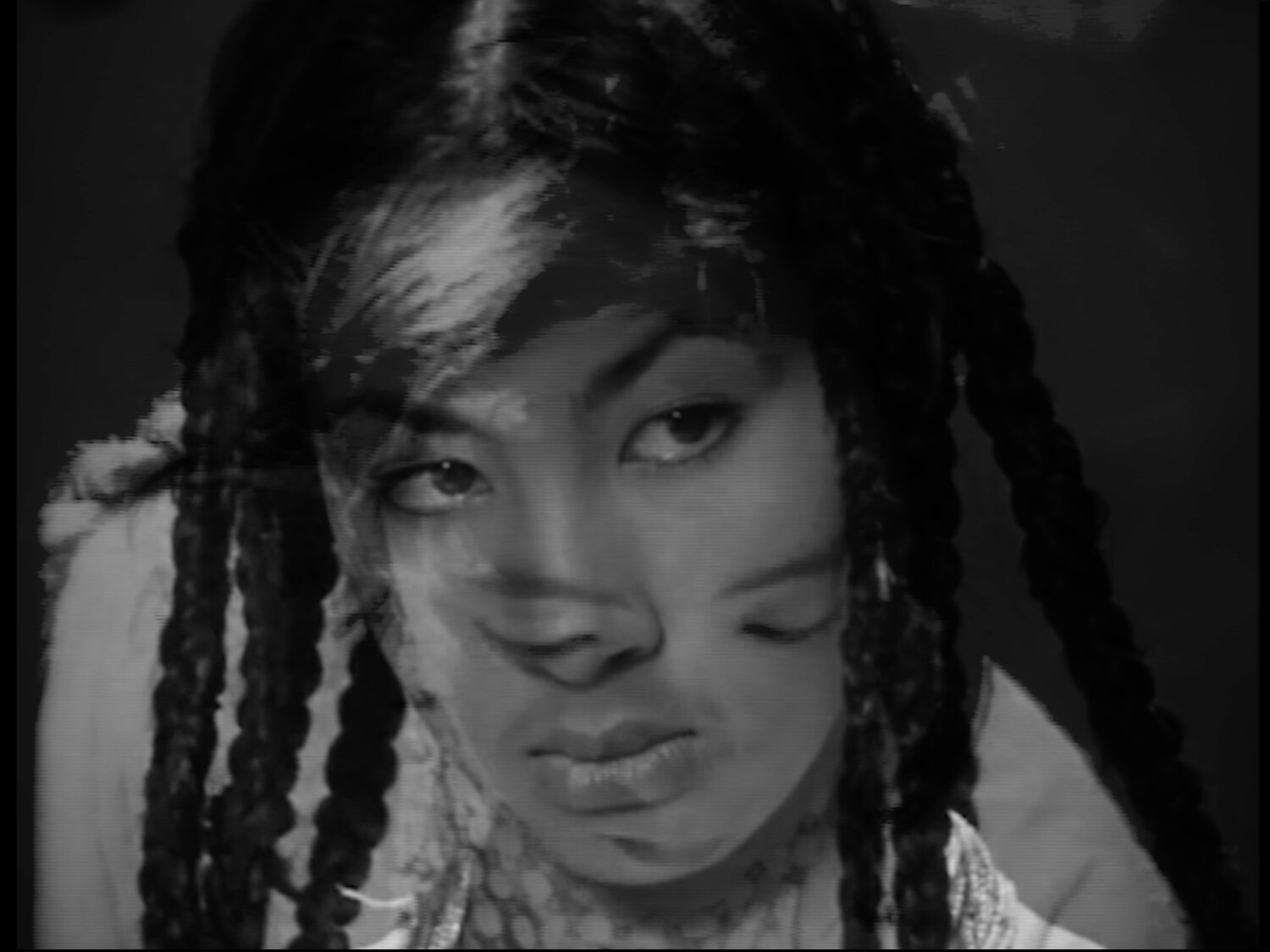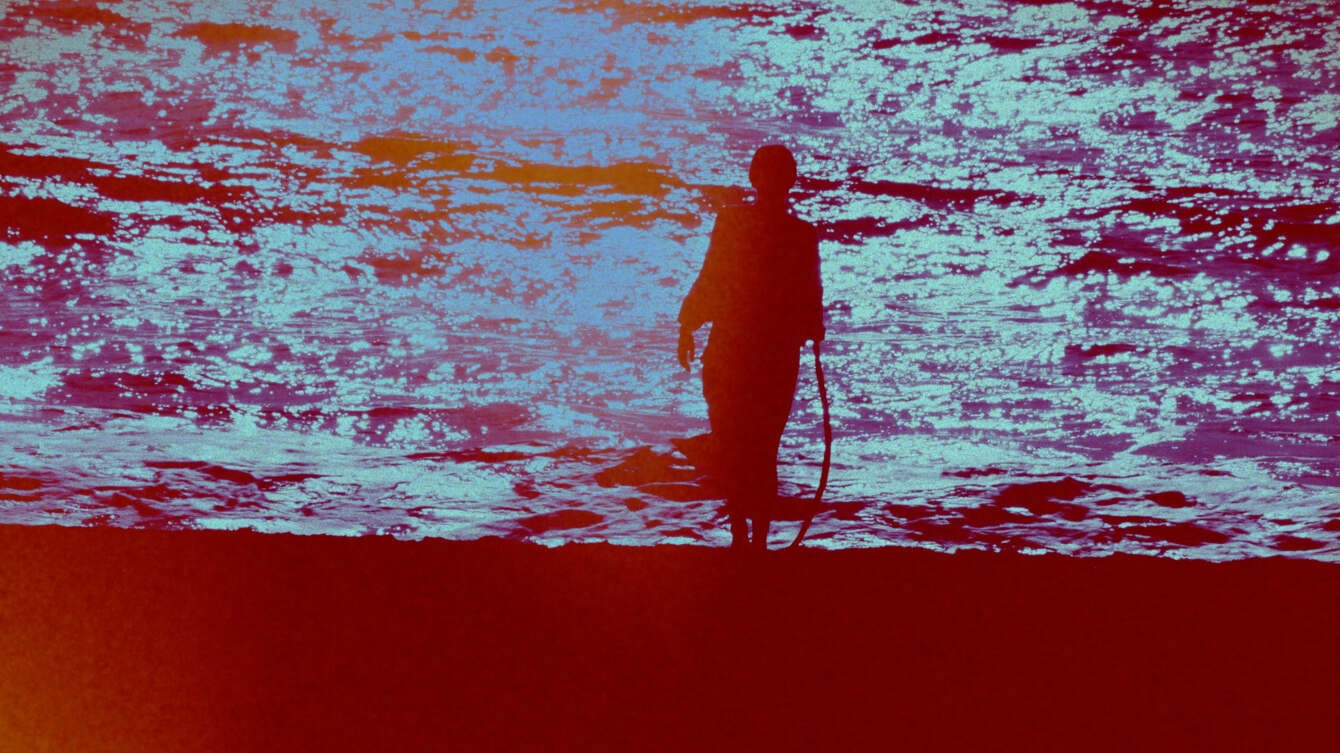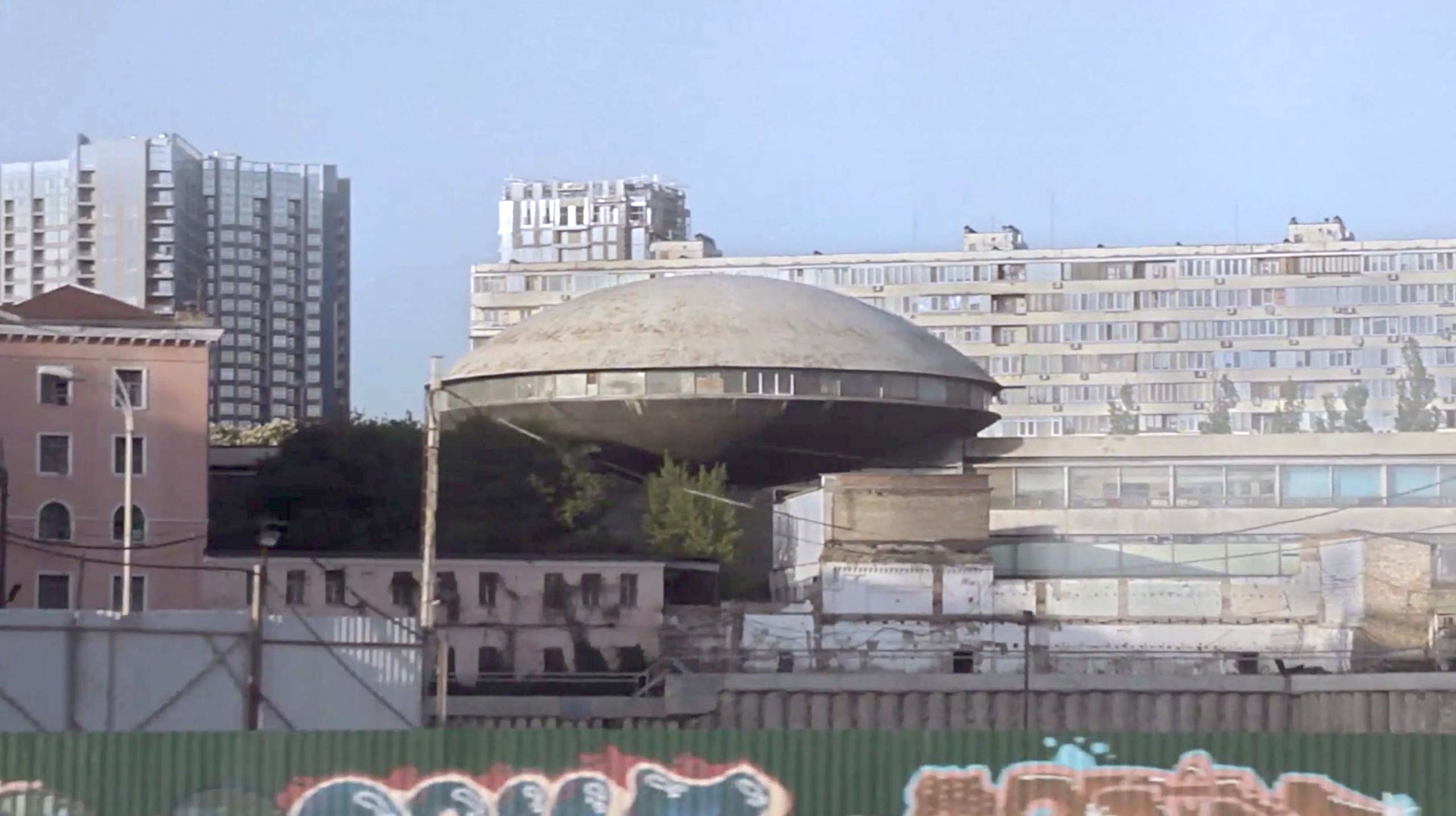Spaces-in-between
RNCM Theatre, Manchester
7th February 2020
Spaces-in-between was a programme of five world premiers of short films by artists based around the world, each scored by a different UK composer, reflecting on notions of home, displacement and exile. I curated and commissioned the film programme as part of Video Jam, an event series I co-directed from 2012-2022.
The programme encountered a variety of indeterminate, contested or hidden spaces, from a deserted opera house in the Middle East to occupied Palestinian homelands only accessible via Google Maps. Together, these commissioned films offered a variety of perspectives and contexts for encountering how displacement manifests in ways that are ignored, forgotten or hidden from outside view, whether collectively internalised by communities, buried for political purposes or lost amongst the ruins of the past.
![]()
The programme encountered a variety of indeterminate, contested or hidden spaces, from a deserted opera house in the Middle East to occupied Palestinian homelands only accessible via Google Maps. Together, these commissioned films offered a variety of perspectives and contexts for encountering how displacement manifests in ways that are ignored, forgotten or hidden from outside view, whether collectively internalised by communities, buried for political purposes or lost amongst the ruins of the past.


Her Right by Saodat Ismailova scored by Seaming To
“Her Right journeys back to ‘Hujum’, a political campaign that took place in 1920s Uzbekistan under the newly established Communist Party. Meaning ‘attack’ or ‘assault’, Hujum began with the unveiling of Muslim women in an attempt to bring them to public life and create a new workforce. Women found themselves flattened in-between traditional society and an imposed state ideology, risking their lives if they showed resistance to the new foreign government. Both veiled and unveiled women feared harassment – the veiled by the new regime, the unveiled by traditionalists. For many it was a century of emotional and social displacement that has still not been finally resolved.
Her Right it a video patchwork created from VHS and Beta Cam copies of early silent Uzbek films focussing on Hujum, which I found in the private archives of individual collectors. This silent period from 1927 - 1931 was a political tool to reshape and manipulate local society for the construction of a Soviet future. Unfortunately this Uzbek cinema is largely forgotten: most of the remaining copies are kept in the Moscow Film Archives while some films are lost altogether.” - Saodat Ismailova
“Her Right journeys back to ‘Hujum’, a political campaign that took place in 1920s Uzbekistan under the newly established Communist Party. Meaning ‘attack’ or ‘assault’, Hujum began with the unveiling of Muslim women in an attempt to bring them to public life and create a new workforce. Women found themselves flattened in-between traditional society and an imposed state ideology, risking their lives if they showed resistance to the new foreign government. Both veiled and unveiled women feared harassment – the veiled by the new regime, the unveiled by traditionalists. For many it was a century of emotional and social displacement that has still not been finally resolved.
Her Right it a video patchwork created from VHS and Beta Cam copies of early silent Uzbek films focussing on Hujum, which I found in the private archives of individual collectors. This silent period from 1927 - 1931 was a political tool to reshape and manipulate local society for the construction of a Soviet future. Unfortunately this Uzbek cinema is largely forgotten: most of the remaining copies are kept in the Moscow Film Archives while some films are lost altogether.” - Saodat Ismailova

Canada Park by Razan Alsalah scored by Nabihah Iqbal
“Canada Park is an essay film exploring the politics of dis/appearance of Palestine in contemporary Israel. The work is constructed via screen recordings of the artist searching through Google Maps, Wikipedia and early 20th-century colonial landscape photography of the ‘Holy Land’; namely at the site of the village of Imwas, a village cited in the Old Testament. The park is located between what is commonly known as No Man’s Land and Jerusalem. The film explores this absurd space of suspension to create a counter mythology of this place; against the religious, geopolitical and capitalist forces that actuated their imaginings on Palistine, people and land. Imwas is not erased. Its buried underground, an undercommons, an elsewhere here, where colonialism no longer makes sense.” - Razan Alsalah
“Canada Park is an essay film exploring the politics of dis/appearance of Palestine in contemporary Israel. The work is constructed via screen recordings of the artist searching through Google Maps, Wikipedia and early 20th-century colonial landscape photography of the ‘Holy Land’; namely at the site of the village of Imwas, a village cited in the Old Testament. The park is located between what is commonly known as No Man’s Land and Jerusalem. The film explores this absurd space of suspension to create a counter mythology of this place; against the religious, geopolitical and capitalist forces that actuated their imaginings on Palistine, people and land. Imwas is not erased. Its buried underground, an undercommons, an elsewhere here, where colonialism no longer makes sense.” - Razan Alsalah

A Dream in Red by Christin Turner scored by Chaines with RNCM musicians
Christin Turner’s film is a new excert from her upcoming feature-length essay film on Pompeii’s allegorical relationship with cinema. This short envisions the universal experience of displacement that humans have experienced since time immemorial. Inspired by Henry Moore’s depictions of the human form produced during the London Blitz, Turner’s film presents a series of dimly lit faces and bodies shrouded in darkness, ensconced in time. Shot on 16mm film and digital, Turner’s film incorporates 35mm nitrate film footage taken during the most recent eruption of Vesuvius in 1944 during WWII. In taking advantage of these specific mediums and methods spanning the hiustory of cinema, Turner blurs divisions between modernity and antiquity, and merges natural disasters with those man-made.
Christin Turner’s film is a new excert from her upcoming feature-length essay film on Pompeii’s allegorical relationship with cinema. This short envisions the universal experience of displacement that humans have experienced since time immemorial. Inspired by Henry Moore’s depictions of the human form produced during the London Blitz, Turner’s film presents a series of dimly lit faces and bodies shrouded in darkness, ensconced in time. Shot on 16mm film and digital, Turner’s film incorporates 35mm nitrate film footage taken during the most recent eruption of Vesuvius in 1944 during WWII. In taking advantage of these specific mediums and methods spanning the hiustory of cinema, Turner blurs divisions between modernity and antiquity, and merges natural disasters with those man-made.

Circulation by Oleksiy Radynski scored by Kelly Jane Jones
Circulation presents the landscape and cityscape of Kyiv captured in a perpetual loop from the viewpoint of Kyiv’s ring railway, representing the gaze in permanent displacement, flight or purposeless wandering; a crucial experience for the uprooted, fleeing and/or dispossessed masses of human beings that are set in motion by the global military, economic and climate crises. The train’s circular movement suggests a society in constant transition without destination, from the Communist ‘never’ into the Capitalist ‘always,’ revealing the city’s decrepit post-industrial areas, its newly-built affluent housing estates, its crumbling pieces of social infrastructure and parts of its ‘Westernised’ city centre. The film pays homage to Chantal Akerman’s documentary D’Est (1993), a critique of the ‘Western’ gaze upon a newly ‘discoverd’ ‘East’ of Europe following the fall of the USSR.
Circulation presents the landscape and cityscape of Kyiv captured in a perpetual loop from the viewpoint of Kyiv’s ring railway, representing the gaze in permanent displacement, flight or purposeless wandering; a crucial experience for the uprooted, fleeing and/or dispossessed masses of human beings that are set in motion by the global military, economic and climate crises. The train’s circular movement suggests a society in constant transition without destination, from the Communist ‘never’ into the Capitalist ‘always,’ revealing the city’s decrepit post-industrial areas, its newly-built affluent housing estates, its crumbling pieces of social infrastructure and parts of its ‘Westernised’ city centre. The film pays homage to Chantal Akerman’s documentary D’Est (1993), a critique of the ‘Western’ gaze upon a newly ‘discoverd’ ‘East’ of Europe following the fall of the USSR.

Libretto-o-o by Joe Namy scored by Lafawndah with Alya Al-Sultani
“Historically the opera has been one of the most contentious spaces for art and politics. Since the introduction of opera to Algiers in 1853 (built for the French during their occupation), its residual impact on all music in the region has been tremendous.
Libretto-o-o is part of a poetic body of work looking at the history and resonance of opera in the Middle East, embodied as a remake of Kenneth Anger’s haunting 1953 short film Eaux d’Artifice. The artist Joe Namy sculpts footage taken from and inspired by twelve opera halls from around the Middle East; some no longer in existence (such as the Khedival Opera House in Cairo), others incomplete spaces that remain frozen in time (Charles Boccara’s unfinished Theatre Royal Marrakech or Frank Lloyd Wright’s designs for the unbuilt Baghdad Opera House).” - Joe Namy
“Historically the opera has been one of the most contentious spaces for art and politics. Since the introduction of opera to Algiers in 1853 (built for the French during their occupation), its residual impact on all music in the region has been tremendous.
Libretto-o-o is part of a poetic body of work looking at the history and resonance of opera in the Middle East, embodied as a remake of Kenneth Anger’s haunting 1953 short film Eaux d’Artifice. The artist Joe Namy sculpts footage taken from and inspired by twelve opera halls from around the Middle East; some no longer in existence (such as the Khedival Opera House in Cairo), others incomplete spaces that remain frozen in time (Charles Boccara’s unfinished Theatre Royal Marrakech or Frank Lloyd Wright’s designs for the unbuilt Baghdad Opera House).” - Joe Namy